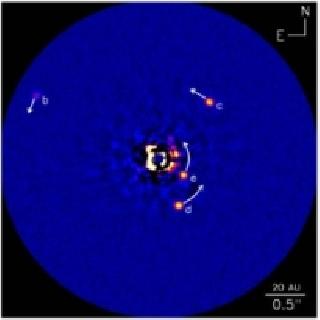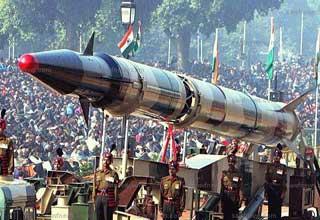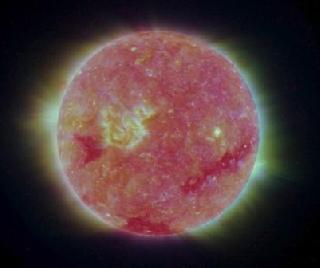
The image shows the four planets orbiting the star HR 8799. A Keck Observatory photo
KAMUELA, HAWAII (BNS): Discovery of a fourth giant planet outside our Solar System has further strengthened astronomers’ belief that planetary systems similar to our own do exist in the Universe.
The new-found planet, called HR 8799e, orbits a bright star named HR 8799, which lies some 129 light years from Earth. This dusty young star was first discovered in 2008 along with three other giant planets orbiting it, which became the first-ever discovery of a planetary family orbiting a star other than our Sun.
With the new planet joining the other three, astronomers say the planetary system could be a “supersised version” of our Solar System.
“Besides having four giant planets, both systems also contain two ‘debris belts’ composed of small rocky or icy objects, along with lots of tiny dust particles,” said Benjamin Zuckerman, a University of California-Los Angeles (UCLA) professor of physics and astronomy and co-author of the paper that reports the findings in the journal Nature.
The four giant planets in our Solar System are Jupiter, Saturn, Uranus and Neptune, and our debris belts include the asteroid belt between the orbits of Mars and Jupiter and the Kuiper Belt, beyond Neptune’s orbit.
All the four planets orbiting HR 8799 are similar in size, likely between five and seven times the mass of Jupiter. The newly discovered HR 8799e orbits the star more closely than the other three planets. If the new-found planet was located in orbit around our Sun, it would lie between Saturn and Uranus.
This giant version of our Solar System is young at about 30 million years old compared to our system, which is about 4.6 billion years old, according to the astronomers who made the discovery by using the Keck II telescope in Hawaii.
“The four massive planets pull on each other gravitationally,” said co-author Quinn Konopacky, a postdoctoral researcher at Lawrence Livermore National Laboratory (LLNL).
“We don't yet know if the system will last for billions of years or fall apart in a few million more. As astronomers carefully follow the HR 8799 planets during the coming decades, the question of the stability of their orbits could become much clearer," the researcher added.
Astronomers now suggest that the planetary system might be containing additional planets closer to the host star besides the four already discovered.
“I think there’s a very high probability that there are more planets in the system that we can’t detect yet,” Bruce Macintosh, a senior scientist at LLNL, said.
“One of the things that distinguishes this system from most of the extrasolar planets that are already known is that HR8799 has its giant planets in the outer parts – like our solar system does – and so has ‘room’ for smaller terrestrial planets – far beyond our current ability to see – in the inner parts,” Macintosh said.
Those yet-to-be found planets could possibly be rocky, Earth-like planets, said Zuckerman.
 Previous Article
Previous Article Next Article
Next Article












The Indian Air Force, in its flight trials evaluation report submitted before the Defence Ministry l..
view articleAn insight into the Medium Multi-Role Combat Aircraft competition...
view articleSky enthusiasts can now spot the International Space Station (ISS) commanded by Indian-American astr..
view article